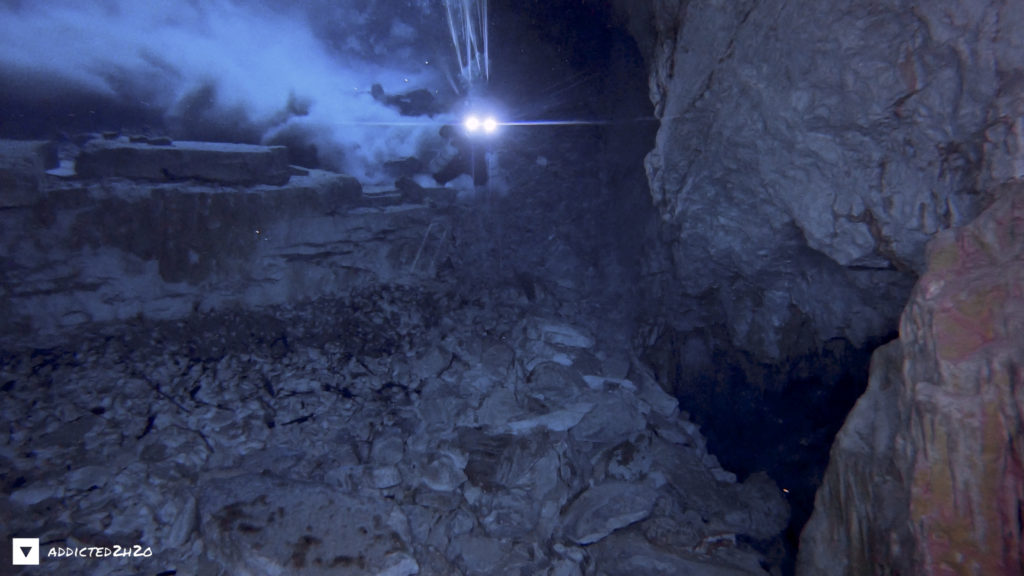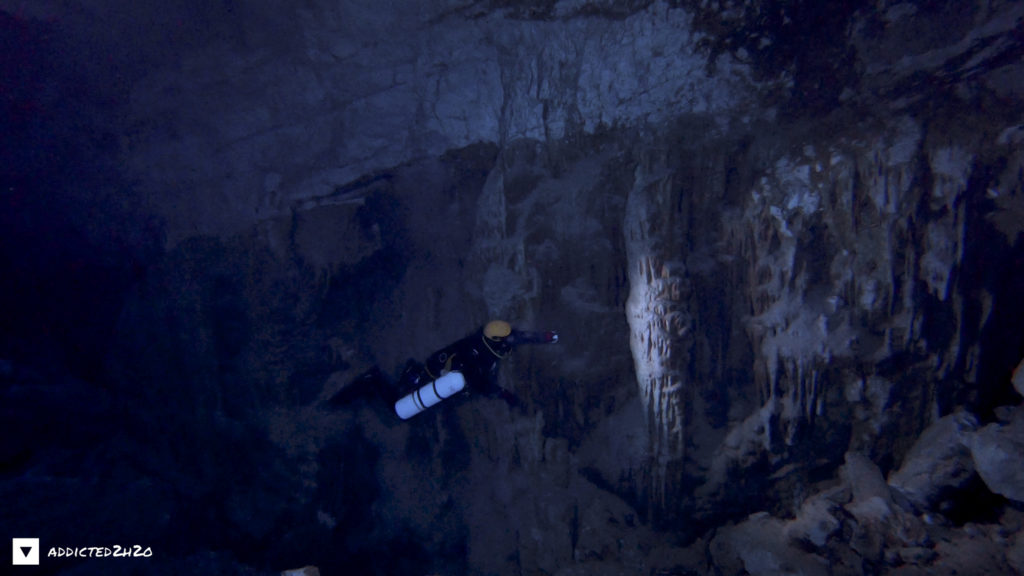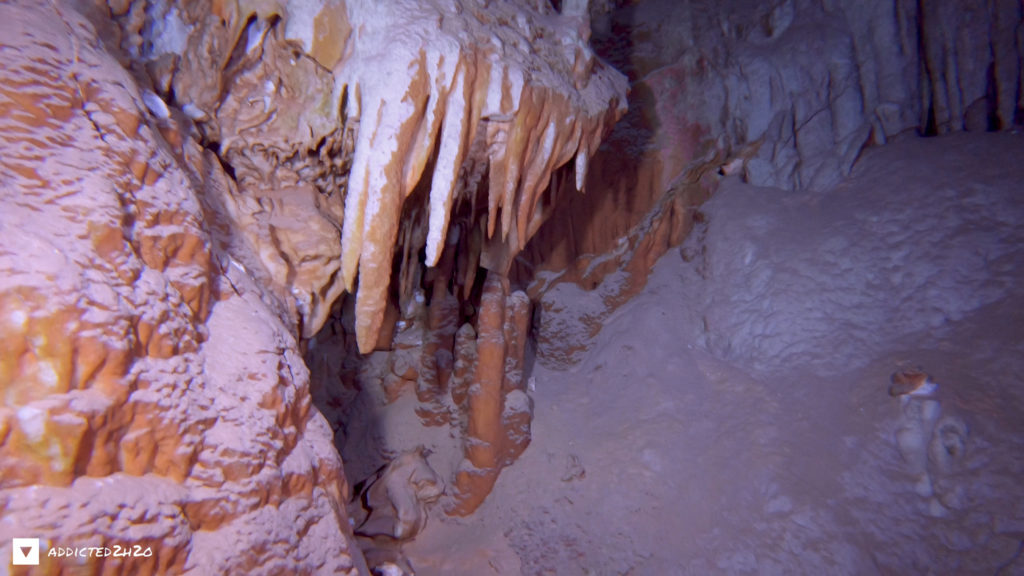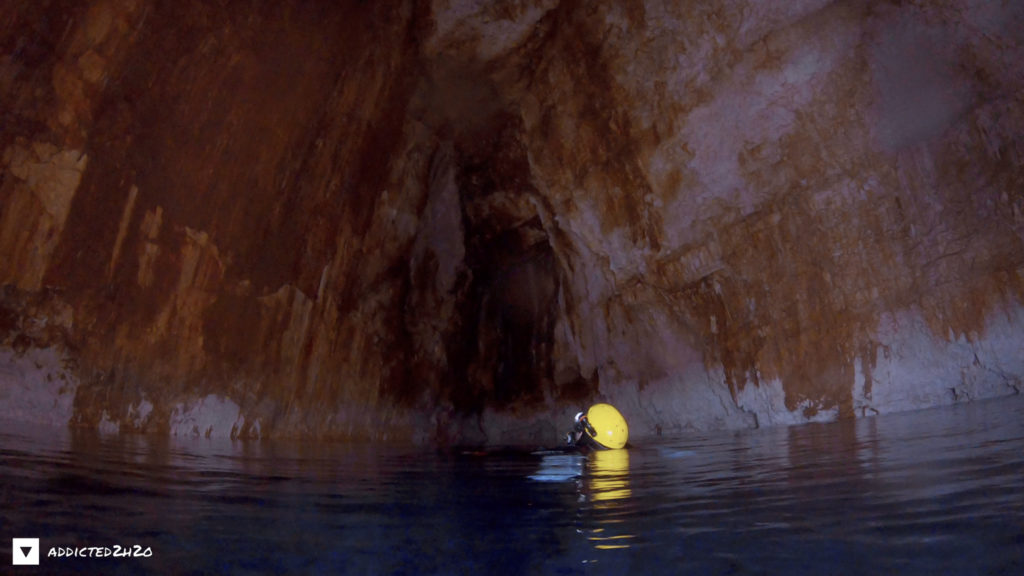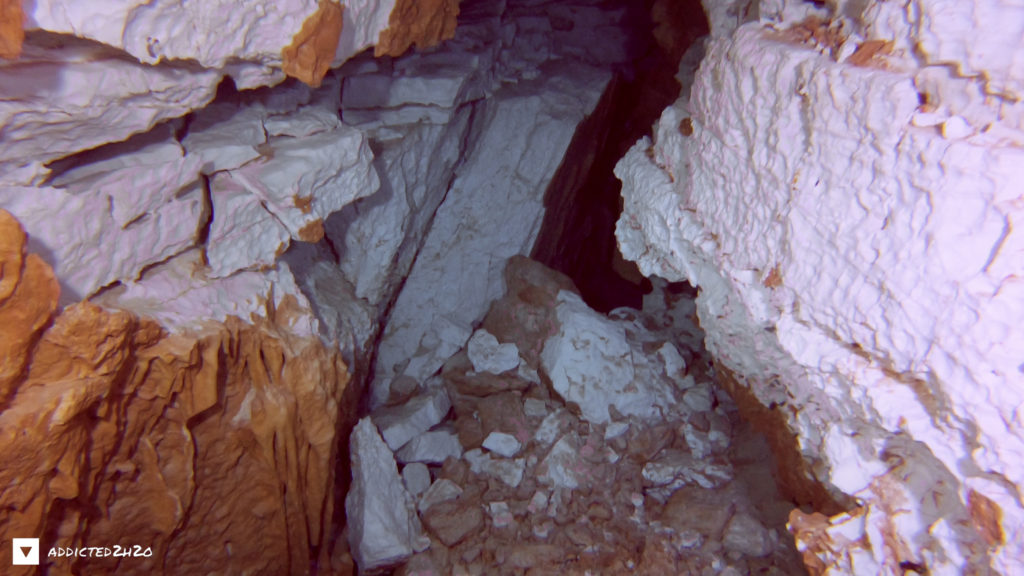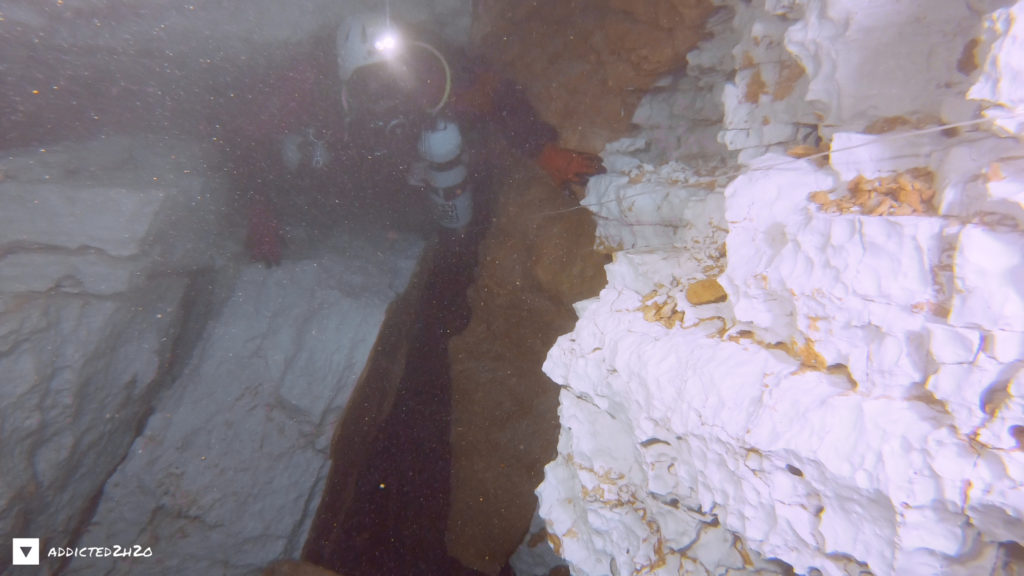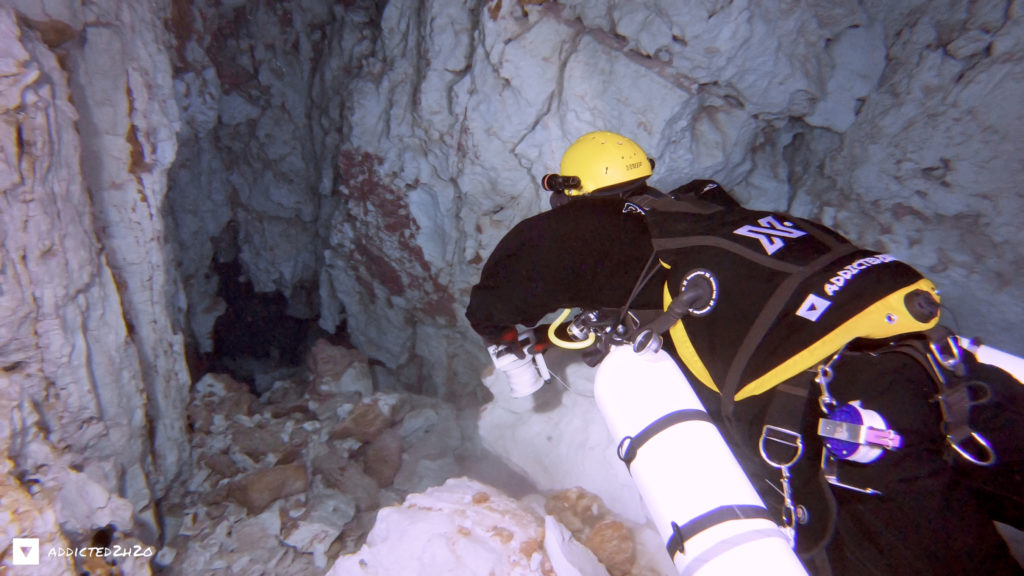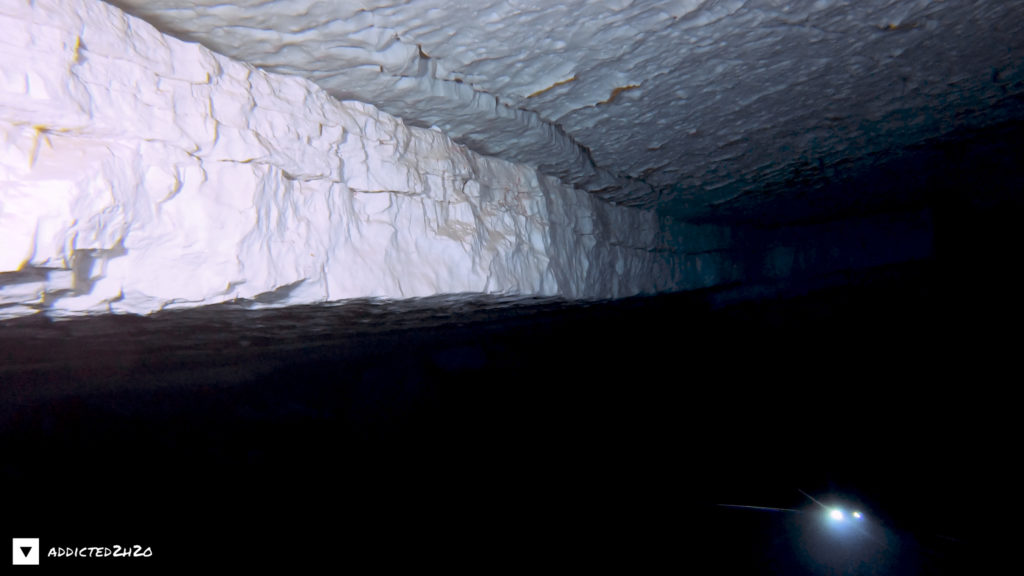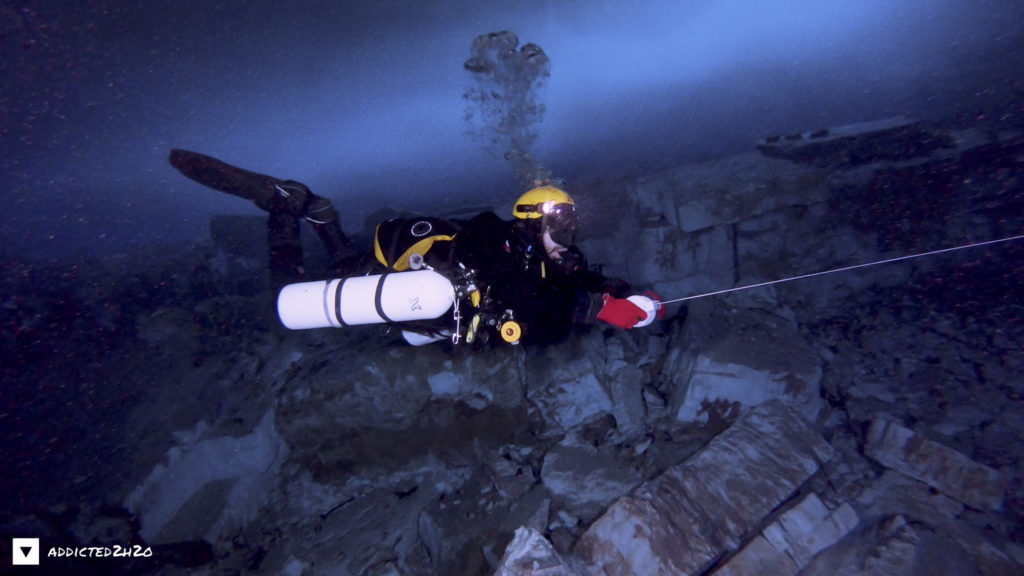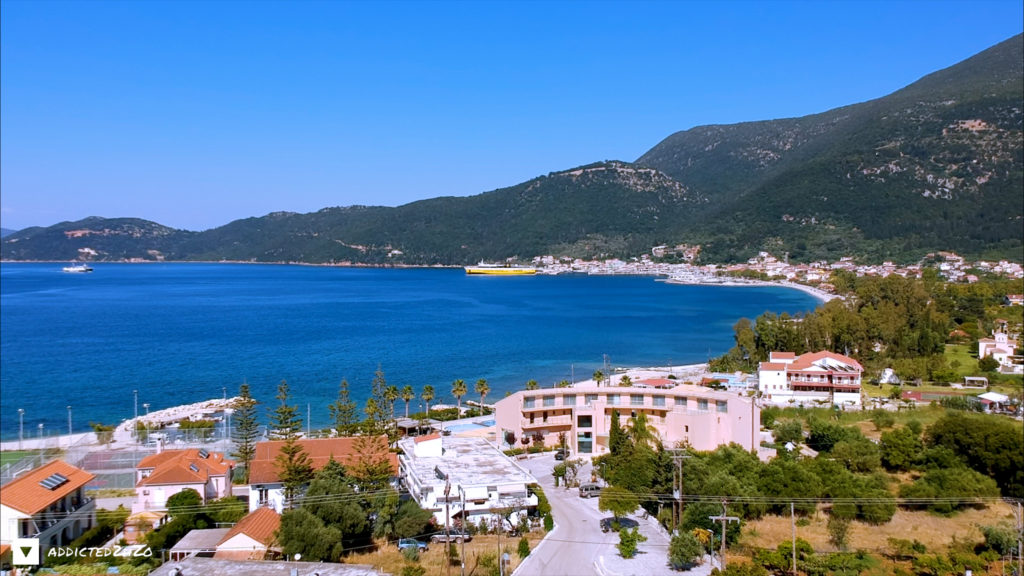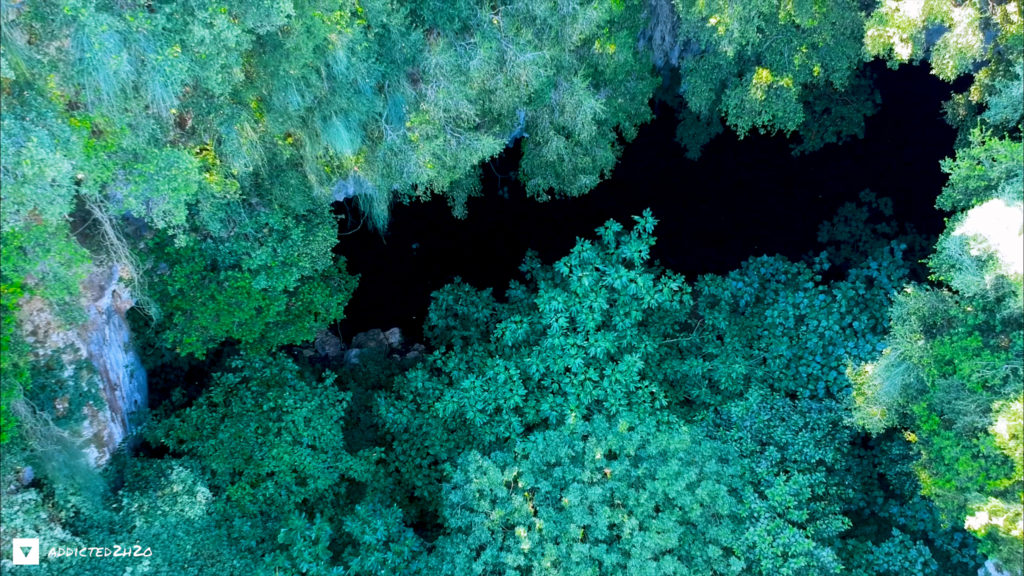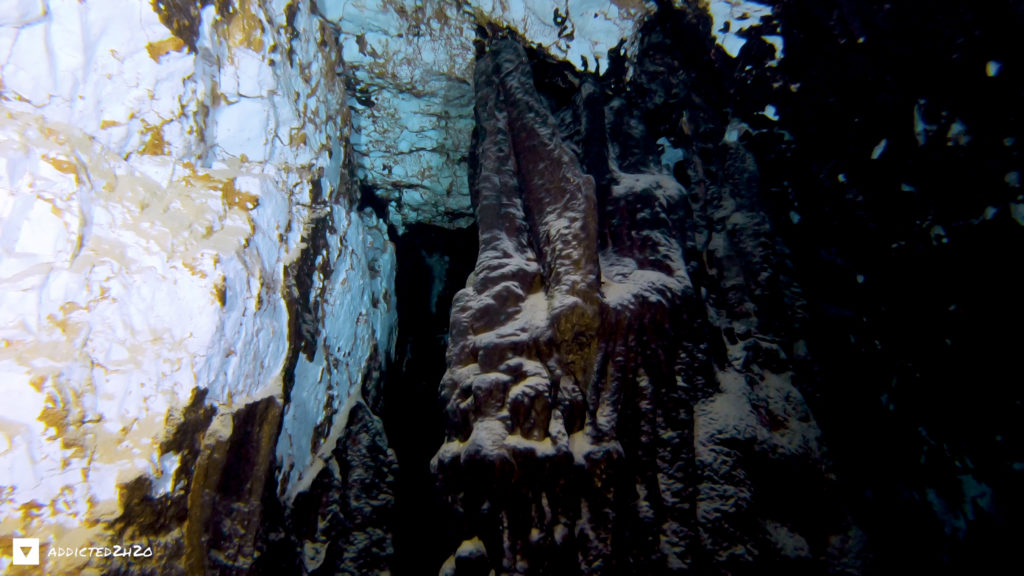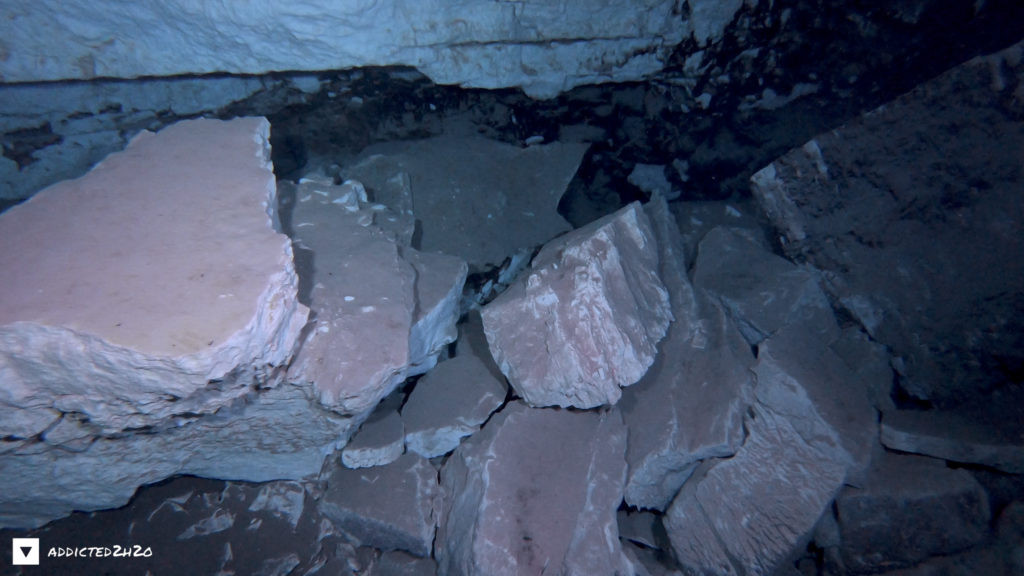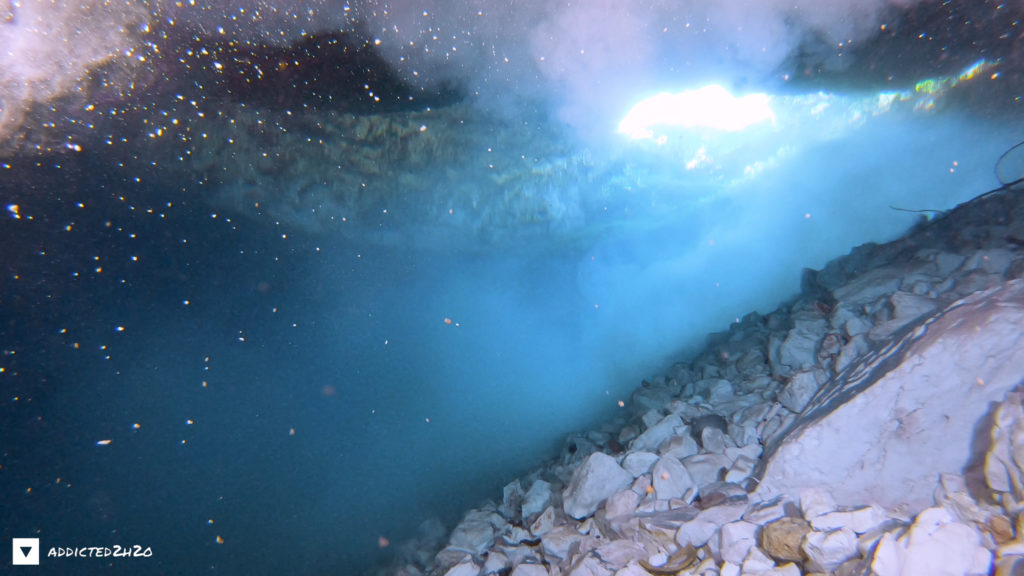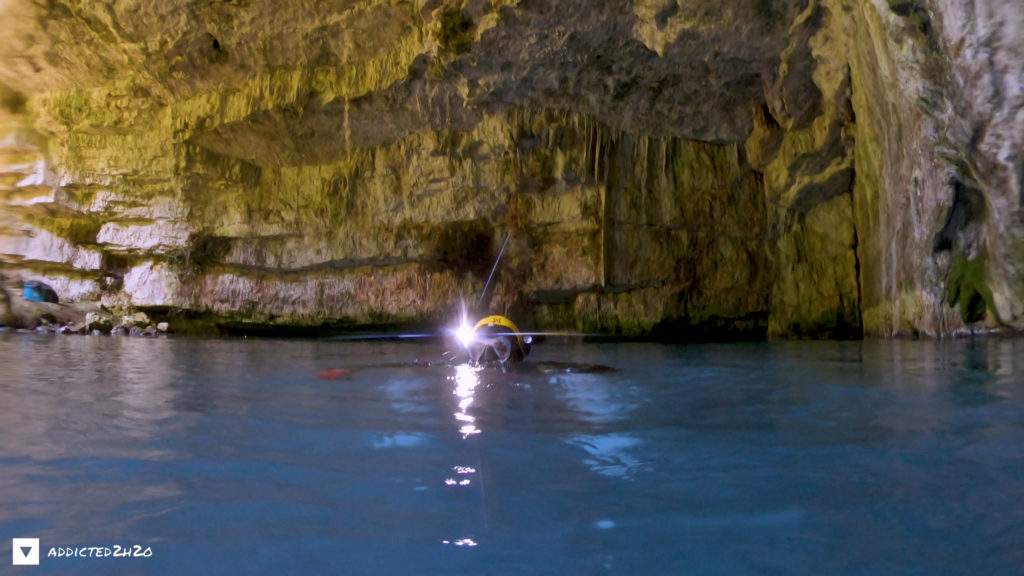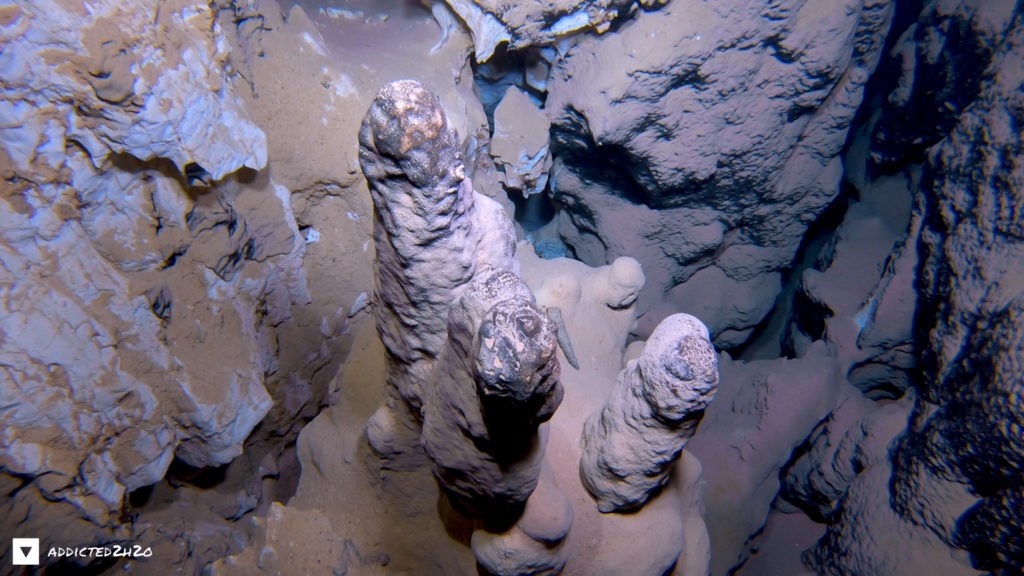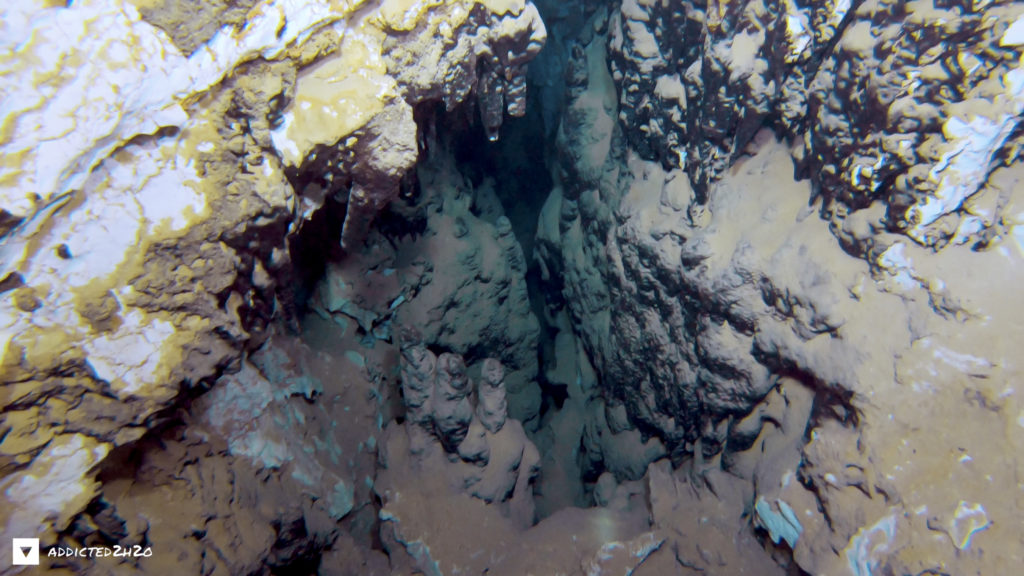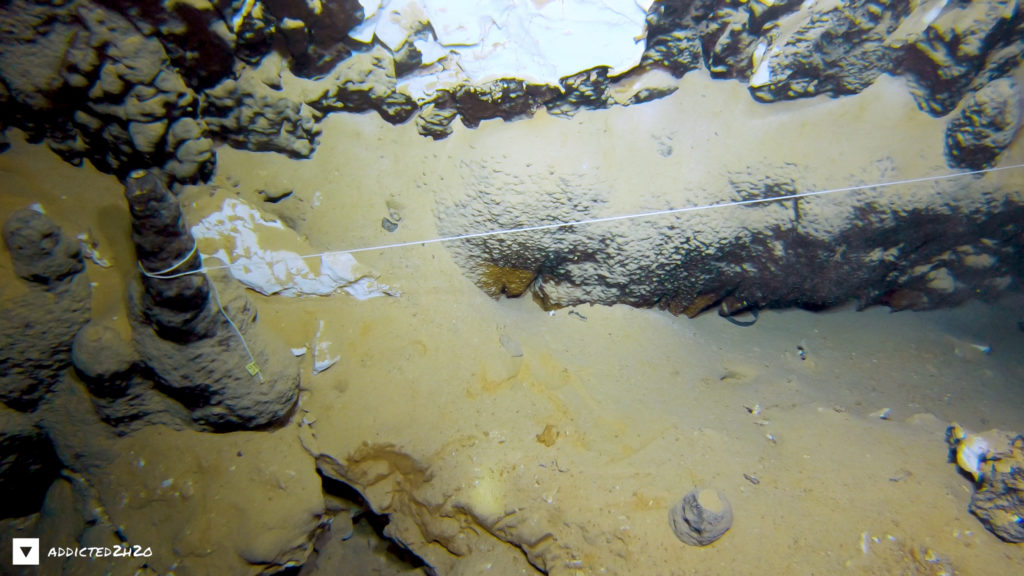The Caves of
Zervati
Zervati cave, which is also known as the “Blue Cave” is located in the southern part of Karavomilos village, at an altitude of about 15m and at a distance of almost 250m from the sea. It constitutes part of the wider karstic network of the Sami area and in addition to its geological value, the cave has particular ecological interest, since the cave lakes are home to rare aquatic plants, fish and eels.
The cave develops in medium to thin bedded Cretaceous (Albian-Cenomanian 113-100.5 million years) limestones of the Pre-Apulia zone, with NW-SE main orientation developing which are covered by alluvium and scree of Quaternary. The total length of the cave is 235 m and the average width is 30 m. The entrance of the cave, measuring 50x30m, has been created by the collapse of the roof of the pre-existing closed hall. The roof and walls of the cave are characterized by the presence of many stalactites. Due to the collapse of the roof, a debris cone (dome) was created, over 10m high, which is located in the center of the open part of the cave and consists its highest point.
On either side of the debris dome (NW and SE) there are two lakes of brackish water above which the roof is maintained. The southeast lake has a maximum depth of 4 m while the northwest 5 m. This part of the cave, which is visible, has a length of 75 m. The water level of the lakes is located at a depth of 16 m, at approximately the same with the sea level, whilst on the walls of the cave there is trace of the old level of the water lake, which was one meter higher from today. After underwater exploration indicated that the cave continues underwater on the side of the northwest lake and ends in a second chamber measuring 85x58m covered with water. The upper part of this chamber is exposed out of the water. At the north and south end of the west side of the chamber there are two siphons which end in impassable narrows, which clearly indicate that the cave continues and is connected to the wider karstic network of the area. As expected with all the siphons in the area, also here the bottom is covered with at least 10 cm of mud. The cave also continues underwater to the southeast lake with a siphon about 50m long.
The salinization of the lake of Zervati cave is attributed to its groundwater communication with the Melissani and Agalaki caves, whose waters eventually flow into the springs of Karavomilos. The waters of the lakes of Zervati, have almost the same composition with the waters of Karavomilos springs, but they have better quality than the waters of Melissani cave. This fact is due to the movement of rainwater towards Karavomilos resulting in the dilution of lake waters.
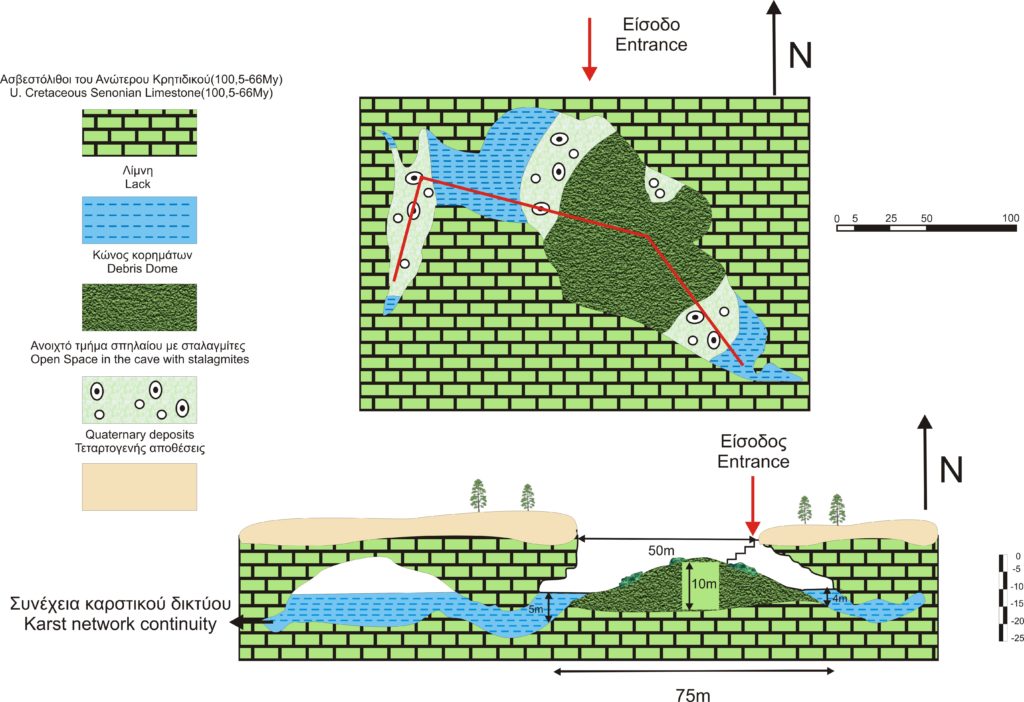
Source:
Kefalonia Georpark Site: https://kefaloniageopark.gr/en/node/531
Cave Divers:
Stelios Stamatakis
Erikos Kranidiotis
ADDICTED2H2O
Do what you can’t
